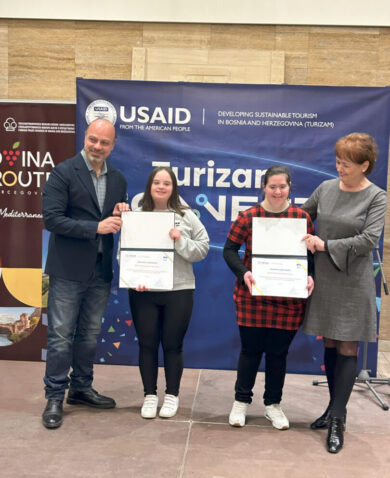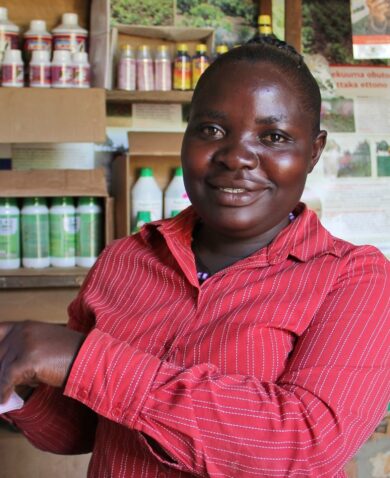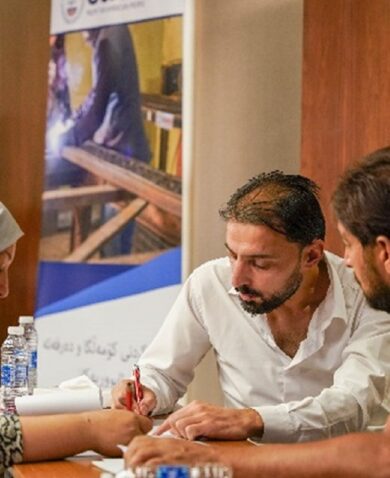
Connecting Social Entrepreneurs to Impact Investors
October 14, 2015 | 3 Minute ReadJulia Enyart explores how emergent investment models can help entrepreneurs with bright ideas find the capital they need to change the world.
A $350 billion gap sits squarely between today’s reality and the potential of impact investing. Why is it so difficult for investors to identify the right opportunities that achieve both social change and a return on capital? How can the development community serve as the intermediary between social entrepreneurs who provide essential services and the impact investing firms whose capital could bring these ideas to scale?
In a competitive marketplace, entrepreneurs face several barriers to entry in a market, including a lack of credit history, few mentors, poor market conditions, limited consumer financing, policy barriers, and limited education and business training. Thankfully, there is a growing number of impact investors who are willing to help entrepreneurs build these capacities. In 2013, impact investors managed $46 billion in funds — almost a 20 percent increase from 2012. But that number is still too small, and social entrepreneurs around the world remain locked out from access to finance. New models of connecting social entrepreneurs to capital are needed, especially if the world is going to close the massive funding gap for implementing the Sustainable Development Goals (SDGs).
The USAID Global Development Lab joined investors, foundations, and NGOs alike to unravel these challenges at the 2015 Social Capital Markets (SOCAP) conference in San Francisco from October 6-9, 2015. SOCAP participants strategized how to bridge the gap between entrepreneurs and impact investors to accelerate the end of extreme poverty. In concert with more than 20 incubators, accelerators, and seed-stage impact investors, the Lab has forged 10 public-private partnerships to test innovative models for rising social entrepreneurs. Through $61 million worth of partnerships with foundations like JP Morgan Chase Foundation, impact investing firms like Omidyar Network, and entrepreneurship development programs like Village Capital and Agora Partnerships, the Lab is creating the connections necessary to empower social entrepreneurs.
Outside the Lab, international NGOs are also looking beyond their traditional funding sources to transform their ability to create and scale change. In a nod to the growing mandate to diversify funding channels, several NGOs such as World Wildlife Fund and The Nature Conservancy are adopting impact investing models as a tool to pool capital, achieve scale quickly, and establish lasting self-financing projects. Gaining ground as an alternative asset class, impact investments are both commercially viable and committed to measuring and reporting on that positive social change.
Underscoring the good economic sense of impact investing models, the Stanford Social Innovation Review estimates that private investors could supply as much as $200 billion to $300 billion per year to preserve the world’s most important ecosystems, from the Borneo rainforest in Indonesia to the African Rift lake system of Rwanda. As private sector investors look to emerging markets as the next frontier, it’s worth considering the substantial investment opportunities across environment and natural resources, agribusiness and value chain development, and urban and energy sectors that remain largely untapped.
Closely trailing the demand for private sector engagement and sustainability is the concept of blended capital, which combines philanthropic funds with private sector investment. Indeed, social entrepreneurs are increasingly leveraging an NGOs’ broad presence in developing countries to test out and potentially scale social services and products that originate in the private sector. At SOCAP, UNICEF Innovation Labs recounted the success of RapidSMS, a free and open-source framework for building mobile services. Created by programmers working in development, these open source technologies are being used to register millions of children in Nigeria and provide antenatal care to thousands of pregnant women across Rwanda. The greatest challenges cited by entrepreneurs at SOCAP were the extensive approval processes and risk-resistant culture inherent in donor-driven organizations. Development players acknowledged these constraints, expressing enthusiasm for the ability of blended capital to foster the space for creation, iteration, and scalability.
To achieve the SDGs, the global development community will need to consider how to best loop in and appeal to the private-sector and mobilize capital. Emergent impact investing models offer the potential to rally all players around overlapping interests.












